With increasing plantings in a range of countries, new and improved varieties and a growing appetite amongst florists and bouquet makers, Waxflower seems to be a very important filler flower crop for the global flower trade. We had a chat with Adrian Parsons, Managing Director of Helix Australia, one of world's largest breeders of Waxflower and Boronia. He told us more about the Waxflower's (Chamelaucium sp.) history, present and future.
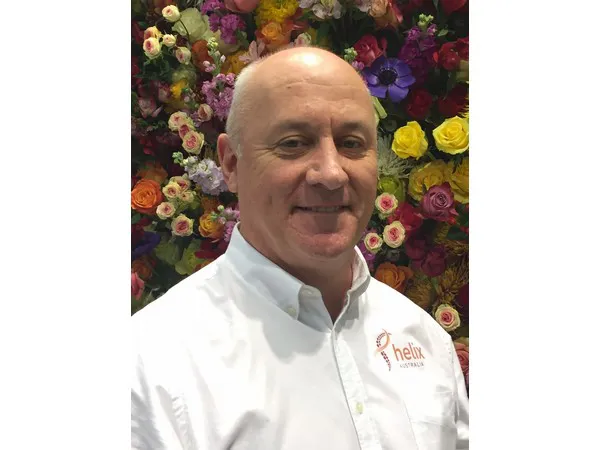
Adrian Parsons, Managing Director, Helix Australia
Waxflower all over the world
Waxflower is a major filler cut flower crop that is supplied to all the key global flower markets. But where does it come from? "Waxflower is native to the area between Perth and Geraldton in Western Australia which is a 400km strip on Australia’s west coast", says Parsons. "This region features very hot and dry summers combined with a very sandy soil profile. Waxflower is produced all year round with key production countries including Australia, Israel, Peru, South Africa, and USA. Whilst waxflower has been harvested in Australia from wild and cultivated blocks for a long time, Israel was the first major commercial grower of this flower crop with first record of harvest in the early 1970s."
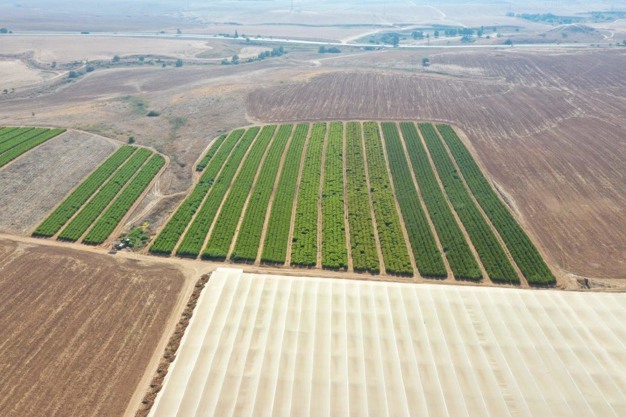
Overhead shot Dror Nakash waxflower farm Lachish, Israel
Israel
With an ideal climate and a range of suitable soil profiles, Israel pioneered waxflower production into Europe counter seasonal to Australian waxflower production, he explains. "Israel commenced waxflower production in 1973 and in the late 1980s, the Israeli government imposed a growth quota as waxflower production had exceeded 200 hectares. Israel historically supplied waxflower in the January-April window, however with advances in breeding focussing on early flowering varieties, Israel waxflower harvest now commences in October and aims to optimise high demand periods around All Saints Day, Christmas, Valentine’s Day, Women’s Day and UK Mother’s Day."
Major waxflower production regions in Israel include western Negev, Lachish, and the Sharon-Emek Hefer region. "In recent years there have also been waxflower plantings in Golan Heights and Arava", he adds.
Waxflower production from Israel has expanded in the last five years. "Current annual volumes are estimated to be approximately 50-60 million stems per annum from 250 hectares of production."
But growers are under pressure. Parsons refers to Lihi Salpeter Danzinger, owner of Blooms Holdings. "She said poor exchange rates and increased prices of labour, water and electricity have increased pressure on Israeli waxflower growers."
“... Israel is called the start-up nation for a very good reason and our growers continue to respond, innovate and deliver quality waxflower to maintain their competitiveness and reliability in the global flower market”, said Salpeter Danzinger.
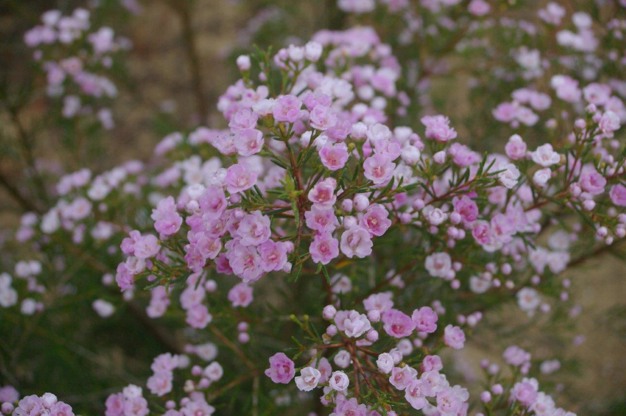 Helix Australia waxflower variety Pirouette
Helix Australia waxflower variety Pirouette
Australia
Waxflower production expanded significantly in Australia in the mid-1980s targeting key export markets in Europe, USA and Japan. "At this time, Australia was the sole southern hemisphere producer of waxflower who therefore had a monopoly on global supply in the period July until November. However, in the last 15 years, southern hemisphere production of waxflower has also expanded in South Africa and Peru. This expansion combined with high labour costs and distance from market has led to a reduction of Australian waxflower production." Australian waxflower is now predominantly sold on the domestic market as well as small scale exports into south East Asia and the west coast of USA.
Despite a decreasing share of global waxflower supply, Australia continued to lead the world in breeding, research and development into the late 1990s. "Many technical advances and an excellent line of new waxflower breeds were developed by the Western Australian Department of Agriculture. This government funded program also developed excellent research into both production techniques and waxflower post-harvest protocols."
Parsons refers to Digby Growns, Senior Plant Breeder Kings Park and Botanic Garden. "He said the new waxflower breeds developed by Department of Agriculture (WA) were named Pearlflowers to distinguish these high-quality hybrids from the standard waxflower."
“…Due to their more ornamental terminal display and significantly increased vase life, Pearlflower hybrids were readily accepted by both growers and the market and within a few years had greatly increased the overall market share for waxflower”, said Growns.
"Until the mid-1980s, waxflower was primarily grown on smaller farms near Perth in Western Australia. However, in 1987 a listed public company Universal Waldeck trading as Australian Flower Exports (AFE) invested significantly in waxflower production planting over 300 hectares of waxflower at Coorow north of Perth. The major waxflower varieties planted at AFE included Purple Pride, Mullering Brook, Alba and Lady Stephanie. AFE selected poor waxflower varieties and the scale of this waxflower plantation was far in excess of global demand at the time. A combination of oversupply and low returns combined with a very poor global economic landscape saw this farm fall into bankruptcy in 1993."
According to Parsons, the major importers of Australian waxflower at this time included flower industry luminaries such as Niek Oudendijk (Oudenijk Import, Holland), Satsuma Sugiyama (Flora International, Japan) and Mike Suyeyasu (Bill Suyeyasu Wholesale, USA).
Waxflower production continued to expand in Australia throughout the 1990s, Parsons continues, with Japan consuming very large volumes at very favourable exchange rates." In addition to the large-scale plantings in Western Australia, there was expansion in waxflower near Gatton and Toowoomba in Queensland. This region was able to commence waxflower harvest 4 weeks ahead of crops from Western Australia. The positive trend for waxflower production started to ease around 2004 when drought conditions plus a very high Australian dollar made waxflower exports unviable. The emergence of Peru and South Africa as waxflower producers also impacted Australia’s waxflower global market share from 2009 onwards."
"Craig Musson, owner WAFEX said the period from 2001-2006 saw a serious realignment of the Australian waxflower industry with many growers ceasing production in lieu of either alternative crops or selling their land holding for development."
“…to survive as a player in waxflower we had to seriously invest in the development of new hybrids and opt out of bulk commodity waxflower varieties. We began and continue to focus on marketing premium higher value hybrids from our Helix Australia breeding program.” says Musson.
According to Parsons, in recent years there has been a resurgence in waxflower production in Australia driven by the release of many new hybrid varieties plus a very strong demand on the domestic market for native Australian flowers. "Current waxflower production in Australia is estimated at 6 million stems per annum harvested from 90 hectares with a farm gate value of approximately $3 million (AUD). As well as continued production on Australia’s west coast, there has been expansion in waxflower plantings in the Grampians region near Melbourne. This region extends Australian waxflower harvest window into late November/early December."
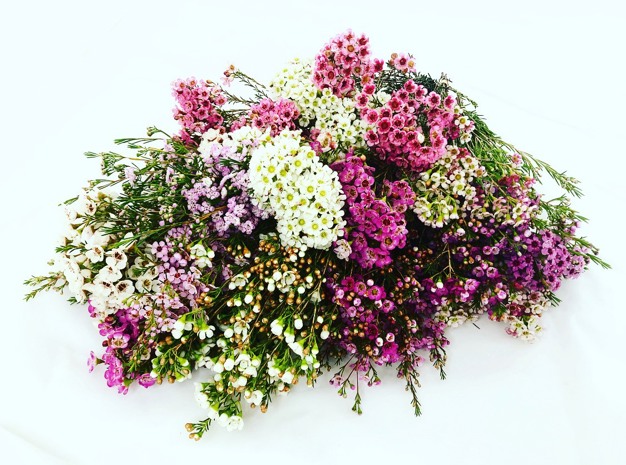
Assortment of Helix Australia waxflower
South Africa
South Africa’s major cut flower exports have typically focussed on fynbos genera such as Protea, Leucospermum, Brunia, Leucadendron and Berzillia. Climatic regions suitable for waxflower were identified about 200kms north of Cape Town around 2004. These regions included Hopefield and Citrusdal and enabled waxflower harvest in the period from July until November. "This waxflower harvest timing coincided with Australia, but lower production and freight costs enabled South Africa to corner the supply into Europe. Current waxflower volumes in South Africa are estimated to be approximately 10-12 million stems per annum with plantings increasing in coming years."
It is estimated over 80% of South African waxflower production is exported to The Netherlands with the balance sold to Cape Town based flower exporters servicing Middle East, Asia and USA.
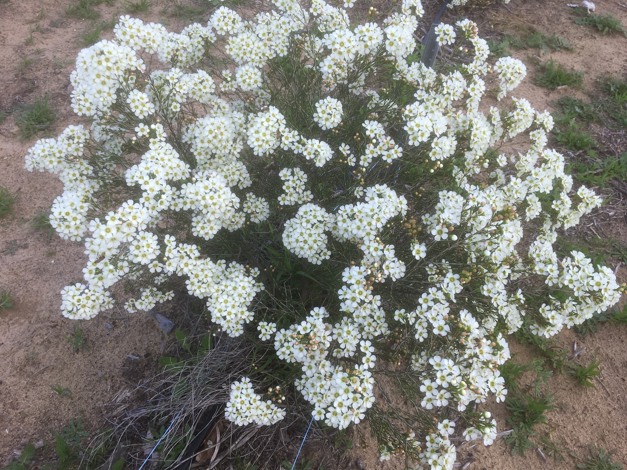
Helix Australia waxflower Dawn Pearl
USA
The region near San Diego California was identified as being ideal for waxflower production in the late 1970s/early 1980s. "Along with plantings of Banksia, Protea, Kangaroo Paw, Eucalyptus and Rice flower – Californian growers planted waxflower in large volumes on undulating and rocky terrain where the harvest crews often needed a rope around their waist to help traverse and harvest the crop from January until May each year."
"Data sourced from the San Diego Crop Report indicate current plantings of waxflower to be 300 hectares with a gross farmgate return of USD $6.6million. In addition, USA is a major importer of Australian and Peruvian grown waxflower from June until November each year."
Parsons refers to Steve Dionne, President WAFEX USA who says that waxflower is a very well-established filler crop and sought enthusiastically by all sectors of the flower distribution chain – including wholesalers, florists, wedding planners and bouquet makers.
“…Through global expansion in waxflower plantings across a range of climatic zones we are now able to offer quality hybrid waxflower to our customers for almost 12 months of the year.” says Dionne.
The Netherlands as key distribution hub
Like many global flower crops, The Netherlands is the major point of consumption for most waxflower producers. "In 2016, annual volumes of waxflower sold by the Dutch auction system totalled 42 million stems at an average price of E0.27c/stem. At the conclusion of 2019, the total waxflower volume for the year had increased to 52 million stems at an average price of E0.31c/stem. Israel and South Africa continue to dominate waxflower supply to the Dutch auctions with small volumes also supplied by Peru and Spain."
Breeding update
Driven by expanding global waxflower production volumes Helix Australia has continued to invest in sophisticated breeding programmes targeting both the cut flower and pot plant trade.
As well as their own breeding programme, Helix Australia also works in partnership with Kings Park & Botanic Garden where sophisticated biotechnical techniques including somatic fusion and increasing ploidy have been developed with the goal to totally revolutionise the colours, sizes and shapes of Waxflower for the coming years.
For more information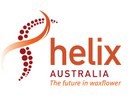
Helix Australia
Adrian Parsons, Managing Director
E-mail: [email protected]
www.helixaustralia.com.au
